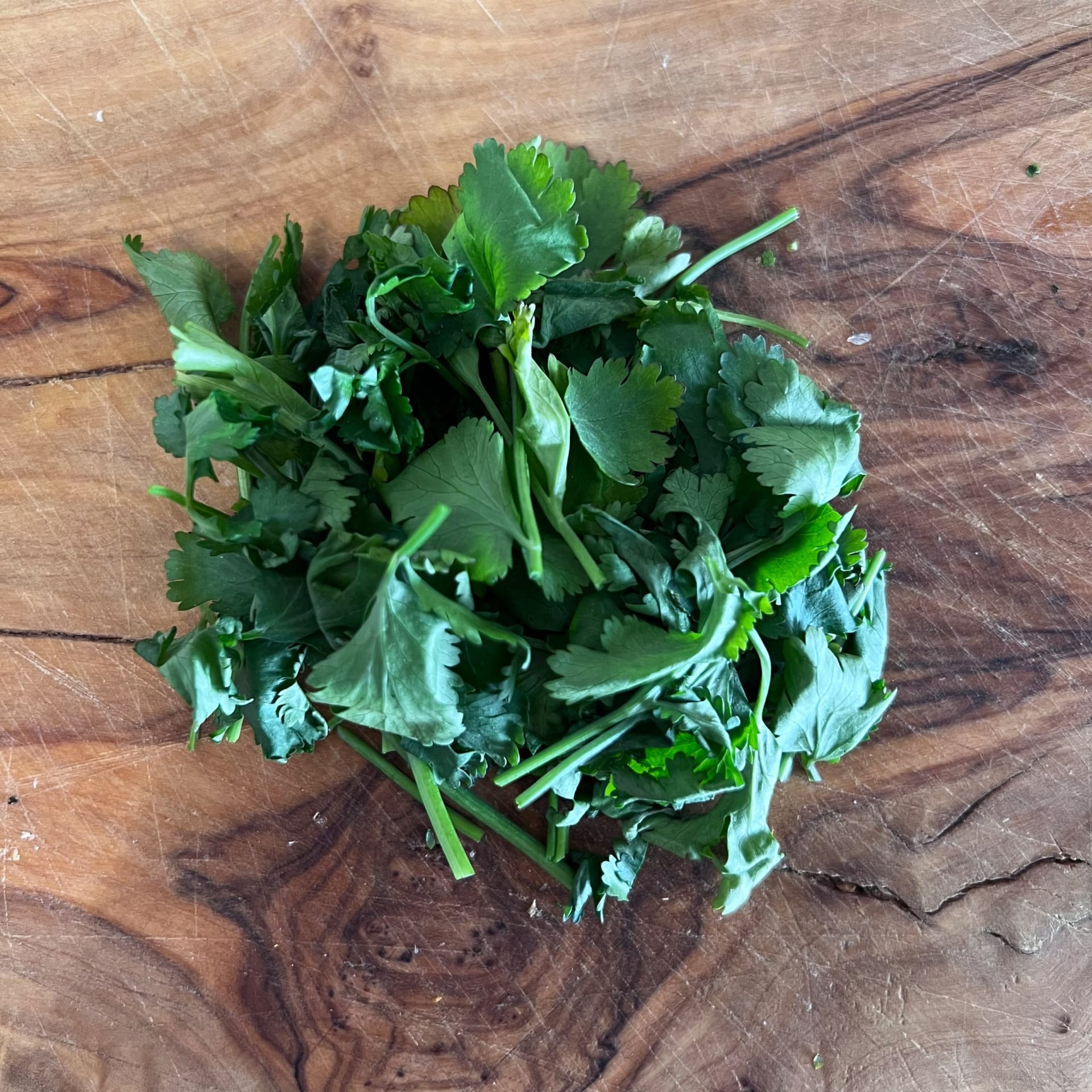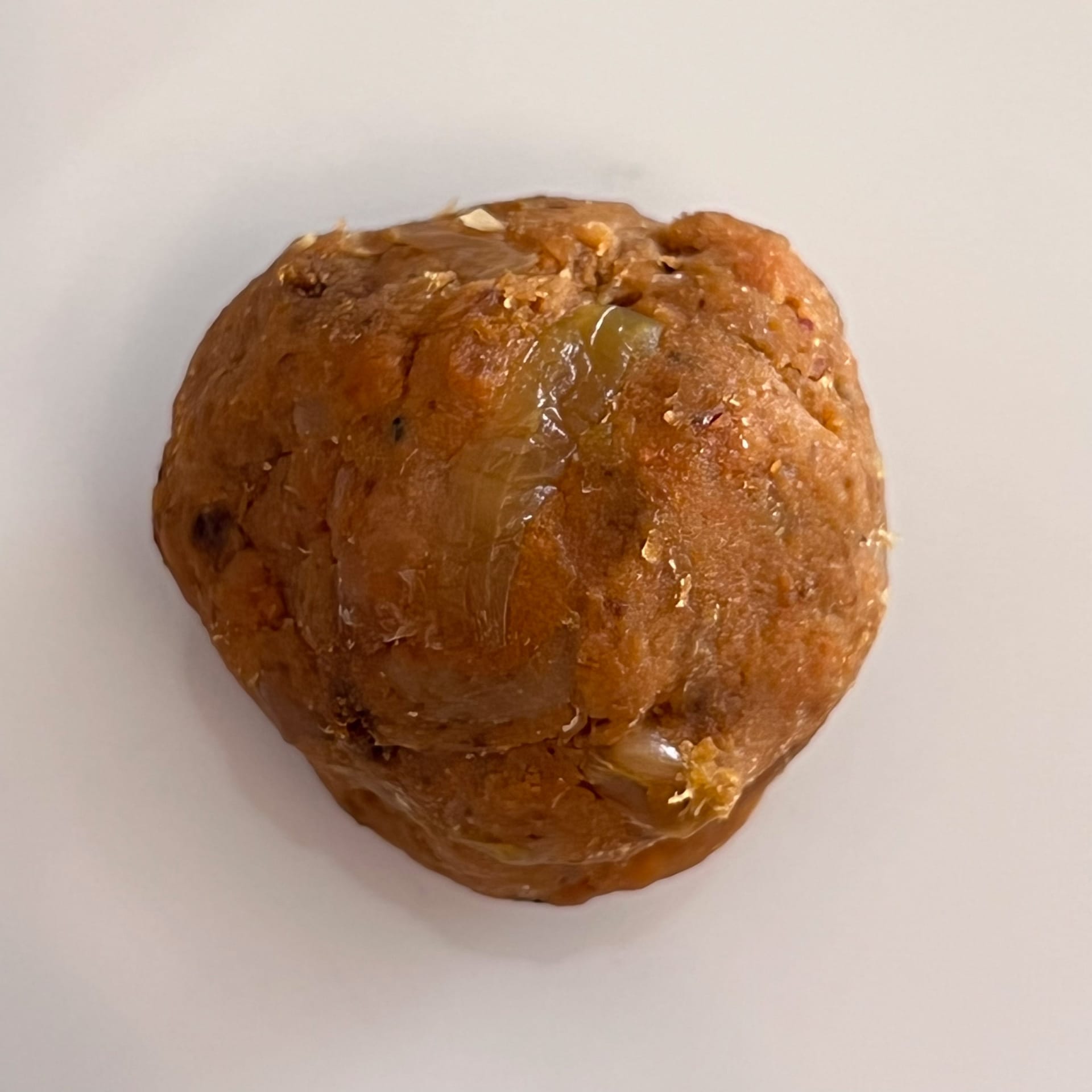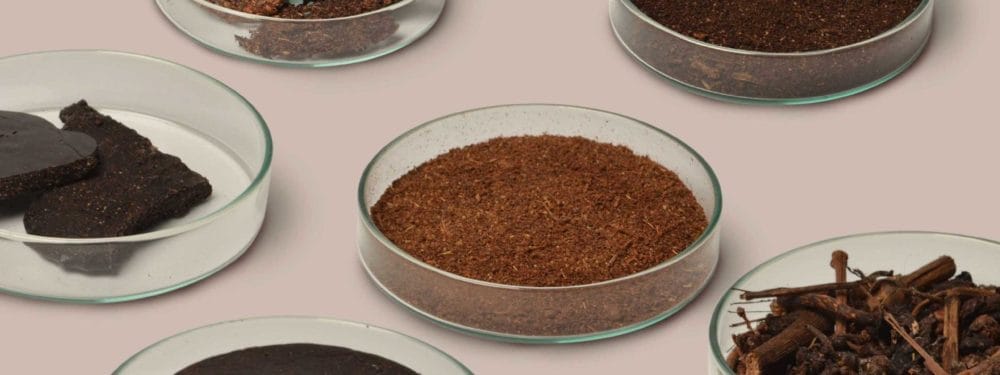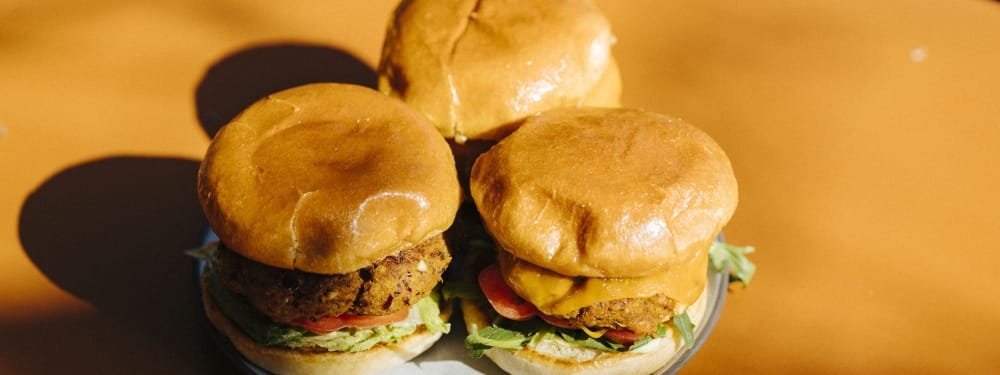The upcycling falafel
If you juice a carrot – with carrot greens – to make a smoothie, have you really used it whole? Dan Barber says no, meanwhile so do we. Vegetable pomace could be a key to the future of meaty textures.
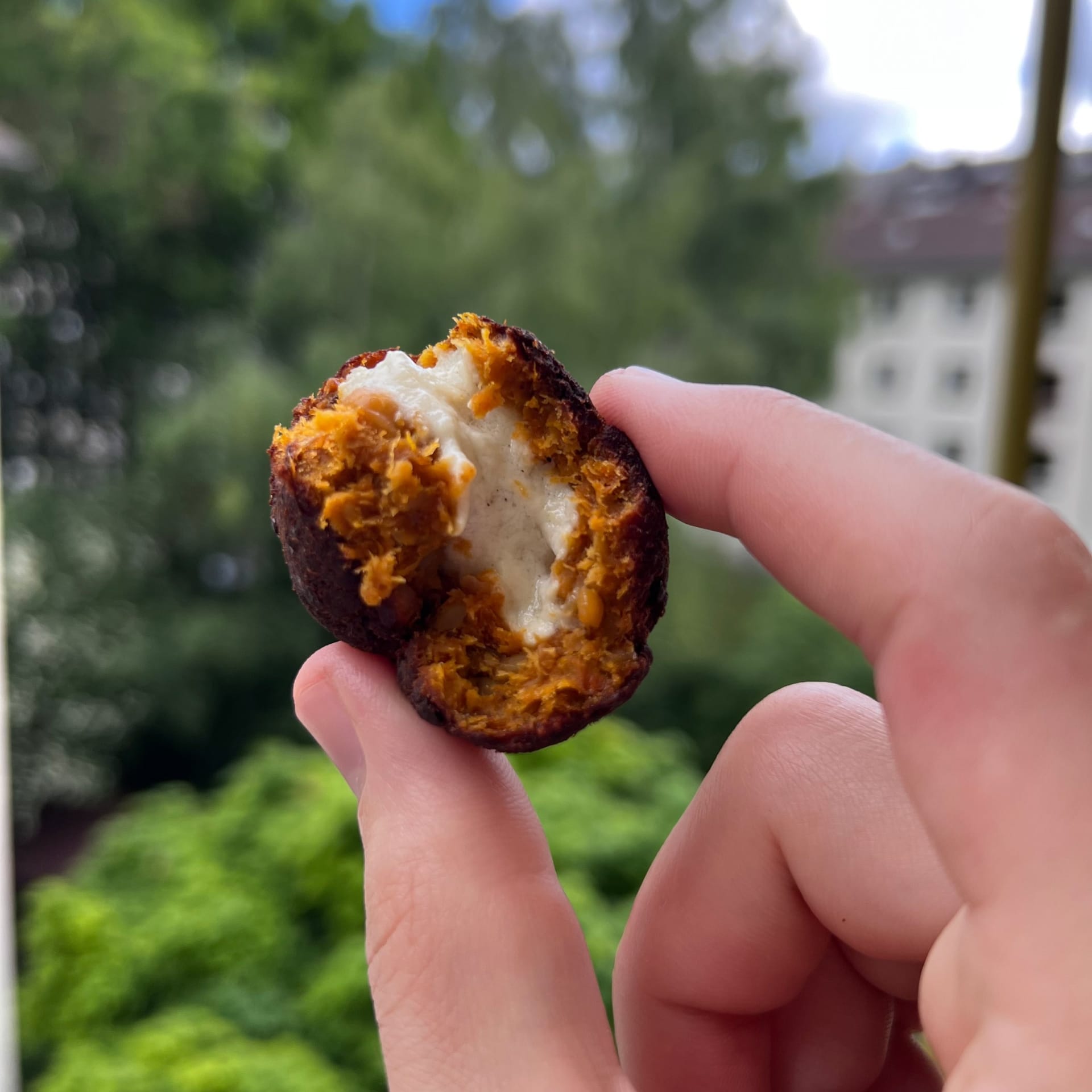
This Food Lab project starts with research for a burger project. In the process, we came across WastED. WastED was an event or pop-up by American celebrity chef Dan Barber to show how to eat not only “Leaf to Root” but even more than that. The prime example: the leftovers from smoothie making. What actually happens to it? According to Statista, six million people in Germany consumed a smoothie at least once a week in 2021. And the trend is upward. And especially when making vegetable smoothies, an incredible amount falls off that doesn’t end up in the cup. Until now, the so-called vegetable pomace has ended up in the trash can, but that may be different in the future.
It should be mentioned at this point that the use of pomace is not a revolution. Grappa is obtained from the grape pomace, which is produced during winemaking.
What do smoothies have to do with texturizers?
Let’s stick to our vegetable scraps. The owner of a smoothie store in Frankfurt kindly gave us her leftovers, so we were able to get started and launch into future research. Our mass was mostly leftover carrots, but a few pieces of beet, apple and celery were also visible. Question at the point: If fruits have flesh, do vegetables have vegetable flesh? Because a prospos meat: Dan Barber uses the fibrous scraps to give vegetarian burgers a meat-like texture. However, the still-moist mass feels more like coleslaw between our fingers. Therefore, the vegetable residue is spread evenly in a thin layer on baking sheets to dry and roast in the oven. And lo and behold, the difference is immense: About two-thirds of the weight fizzles out, and you can feel that in your hand as well. Wet coleslaw has become dry fiber.
What do we do with it now? We’re big on finger food. Falafel are universally popular and without much competition in their weight class. But do they also work with filling? In Levante cuisine they are often dipped in hummus and other dips and sauces, we like to pack the kick right into the middle.
Inspiration Levantine cuisine
So we mix the cooled dried pomace with soft chickpeas in equal parts. Add caramelized onions, yeast flakes, Worcestershire sauce – there should be no lack of umami, garlic, cumin, cayenne pepper, salt and chickpea water aka aquafaba to bind. This is popular as a vegan alternative to beaten egg whites, can also be whipped well with a hand mixer. The resulting mass feels minced meat. First off into the fridge while we take care of the filling. This one is meant to be reminiscent of Levantine cuisine, so we mix feta with creamed yogurt, lemon juice, tahini, and some pepper. The cream is portioned with a small spoon and frozen, so it is easier to fill the balls later. However, before making them, we tested the mass unfilled. Unfortunately, it falls apart too easily when sautéed, so we have to help it along with an egg to give the mixture even more binding.

Now form ping pong ball sized balls, press them in, fill with the frozen cream and seal. Before the final frying, the balls are briefly frozen again. Nevertheless, it is important that they are used in min. 170 °C hot fat (we use rapeseed oil) are fried. On the one hand, this gives them a nice crust right away, and on the other hand, they become less greasy. After barely 2 minutes they are already ready and the taste test is not long in coming. The filling is again nice and creamy, but still light or refreshing enough. We were able to avoid the dryness trap that many falafel fall into, but somehow the result tastes a tad too heavy. At least if you eat them without garnishes.
With one tap, they are in the …
So a second try is needed for our Funky Falafel. We replace the chickpeas with white beans. To this again add caramelized onions, yeast flakes and garlic. Miso and harissa provide even more umami and spice. Cooked green spelt gives an additional texture. Here it is important to use just enough to make them noticeable, but not so much that they become too dominant and break the bond.
We were missing something refreshing in our first attempt, this time we want to add a herbal filling. Chervil, parsley, cilantro, garlic, Parmesan, salt, pepper and a little butter go into the blender for this. An intense smell fills the air and we optimistically pour the herb paste into the white bean-vegetable pulp.
The cooled balls we fry again in plenty of oil and what can we say…we are in the future! Slightly crispy on the outside, slightly meaty on the inside, refreshingly herbal in contrast to the umami notes. The dried vegetable pomace does not give any flavor – as expected – but we wanted texture. That’s what we got: The pomace gives our balls a slight bite and gives the mixture as a whole a firm hold.
The mixture with chickpeas and the one with white beans are very similar in appearance: they are orange like roasted carrots. Depending on which vegetable residue you have, the color changes. A beet pomace is obvious for products in the meat alternatives category.
Upcycling does not only work with clothes
So if a small smoothie store is already churning out five kilograms of vegetable scraps per day, we think it’s quite realistic that enough will fall off overall. Just think of the industrial production of vegetable juices and a large potential source opens up. To be fair, it should be mentioned that the leftovers are not always thrown away either, but are sometimes used as animal feed. In a future with less to no consumption of animal products, it then makes even more sense to use these leftovers as texturizers for burger patties and falafel-like products instead of animal feed. This is upcycling that is not only cool, but also delicious.
What do you think about that, dear reader? Feel free to email us at the address below and let us know how you see the future of the food industry.




